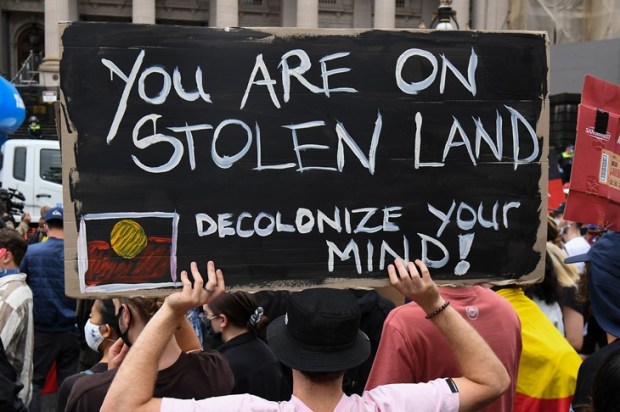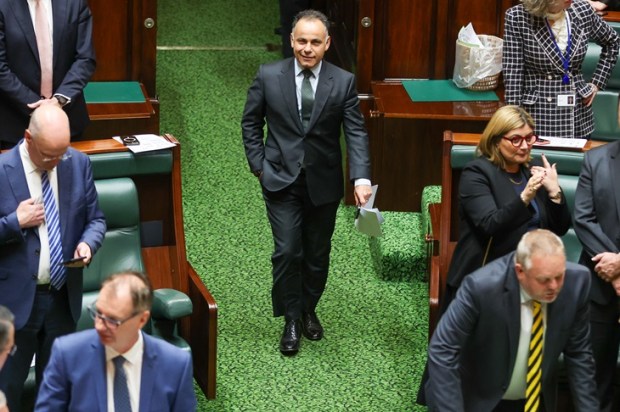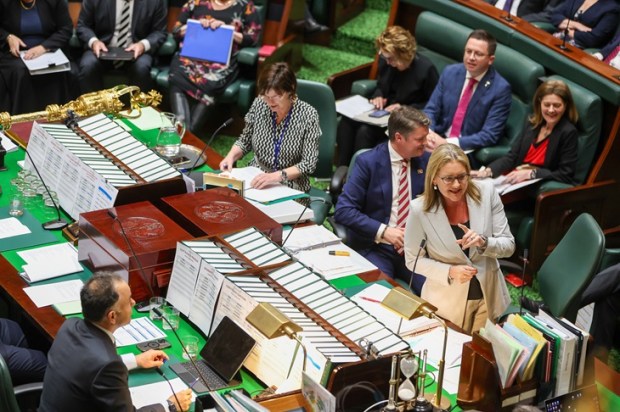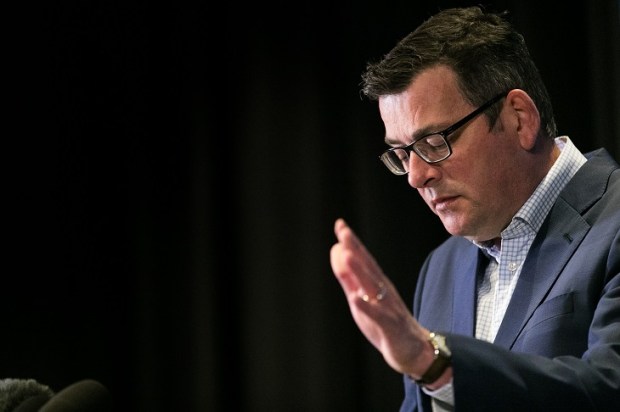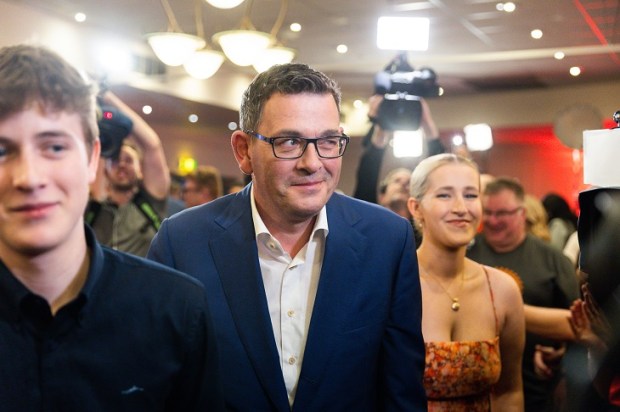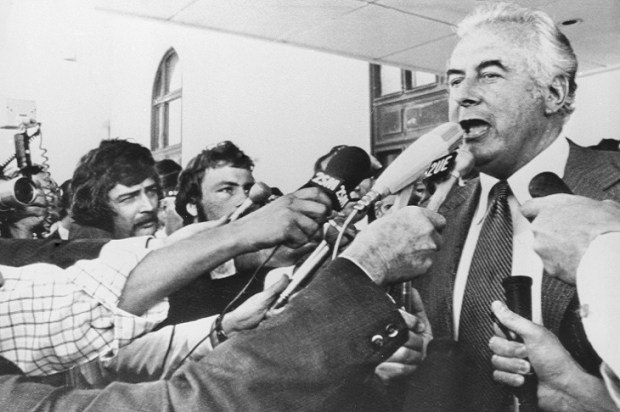If you thought you understood the seemingly endless line of new Indigenous terminology, two more were recently coined by the Victorian Energy Minister on April 22 – land injustice and traditional owner benefit sharing.
The Minister, Lily D’Ambrosio, launched these terms when appearing before the Yoorrook Royal Commission investigating injustices experienced by First Peoples in Victoria since colonisation.
She told the Commission it was ‘horrifying’ that Indigenous people had been shut out of independence and prosperity while Victoria had earned $194.4 million in royalties for the extraction of gold, $885.6 million for coal, and $79.5 million for sandstone and gravel between 2010-23.
There was no mention of the return to the state and federal taxation regimes, if only because of the employment provided to many employees and the companies involved.
The Minister’s proposal for traditional owner-benefit sharing would doubtless lower the income received by governments, apart from taking into account the fact that the history of extractive industries around the globe is one of boom and bust in about equal measure.
What risk would be shared by the traditional owners?
More interesting is the assumption that traditional owners should be a group to be given an unequal share of a relatively new benefit given they lived for 50,000 years on the land now called Australia.
It is inconceivable that Indigenous people did not come across gold and gravel well before the arrival of non-Indigenous settlers. However, until the Europeans brought with them the idea that items for trade had a value, there was no value given or accepted. Nor was there a purpose for them.
The Minister went further. Before bursting into tears, she said, ‘We have to acknowledge that … traditional First Peoples cannot possibly be able to secure what self-determination means for them without having an embedded and reliable source of revenue for themselves.’
This concept smells of creating a separate class of Australians who should be given a never-ending revenue stream because of their colour. And to bring everybody up to date, this would include profits from renewable energy projects – all of which are brought into being because of generous government subsidies. Two bites of the cherry it would seem.
Perish the thought that any of these projects may fail.
The fact that the state government receives royalties has, according to the Minister, played a significant role in ‘perpetuating land injustice against First Peoples’.
She fell short of saying all land is equal in its riches, but some are more equal than others. There was all acknowledgement of the varieties of land on the continent – just a slip-up in assuming every tribe of Indigenous peoples had mineral-rich land. In reality, some tribes had none.
At a time when the truth should be setting us all free, we have a truth-telling commission being told by a Minister who should know better that ‘long-lasting and irrevocable damage has occurred in other parts of Australia … when there is little to no regard for involving traditional owners in major energy and resources projects’.
Tell that to the owners of the Ranger uranium mine at Jabaluka in the Northern Territory, or the Olympic Dam in South Australia.
It begs the question about whether, or how far, the Commission will check the information they receive during their hearings.
Are they listening to the other Indigenous noises which surround us at present?
Within days of the Victorian Energy Minister pegging out her claims, a group of six Indigenous peoples from the Sydney district were at Cambridge collecting four spears brought back to Britain by Captain Cook.
The group leader said they were descendants of the Aboriginal community who confronted Cook’s landing party at Botany Bay on 29 April 1770. Given that there was no Aboriginal documentation recorded at that time, this is a bold statement indeed. How can anyone be certain?
Over 250 years have elapsed since then which equates to some 10 generations.
The sad thing is that it has been said the spears ‘were taken without permission’. How does anyone know this? The botanist, Joseph Banks, who was part of Cook’s party explained in his journal that the landing party gave some beads, ribbons, and cloth as presents.
It is more likely the spears were part of an exchange. Imagine the British sailors risking their lives thousands of miles from home by attempting to take these weapons from their owners.
Telling the truth is a gigantic task when the existence of relevant evidence is often non-existent. Worse still, is the appearance of Victorian State Ministers offering ‘wealth sharing’ to a tiny section of the community whose heritage had no use for the materials which became the basis of that wealth.
For state ministers to express varying shades of regret about the Aboriginal past before the so-called truth telling commission is in sharp contrast with their lack of memory and responsibility for the 801 Victorians whose deaths were investigated in the Coate Hotel Quarantine Inquiry during the Covid era.
Professor Bill Gammage from the ANU wrote the book, The Biggest Estate on Earth. The Indigenous had The Estate – and did little with it. Cook and Phillip did not sail boats into thriving harbours and cities. They sailed into quiet bays with little to no evidence of human existence.
Thousands of years ago, the Egyptians and other civilisations were using gold, silver, and other minerals. Why is it that, now, once others have done the hard work, taken great risks, and lives have been lost along the way, should the Indigenous peoples be offered those resources independent of the claims of others?
The British ships came full of self-determination to create a self-determined nation.
Within the 2022 Barengi Gadjin Recognition and Settlement Agreement in Victoria, is a request by the Indigenous peoples for silver, gold, metals, and minerals to be included in the list of natural resources they are allowed to take from their Agreement area.
If that is agreed, Victorians will have a right to know if the ‘Indigenous’ mines will pay royalties to the state – and payments to all other Victorian tribes.
Victorians should also be keen to know how long the Cultural Heritage Management Plans (CHMPs) will take for assessing these potential Indigenous mines for items of Aboriginal significance. Thus far, that process has been very slow and expensive.
Or will these provide yet another example of the separatism that is flourishing in Victoria: rules for some and not others…


